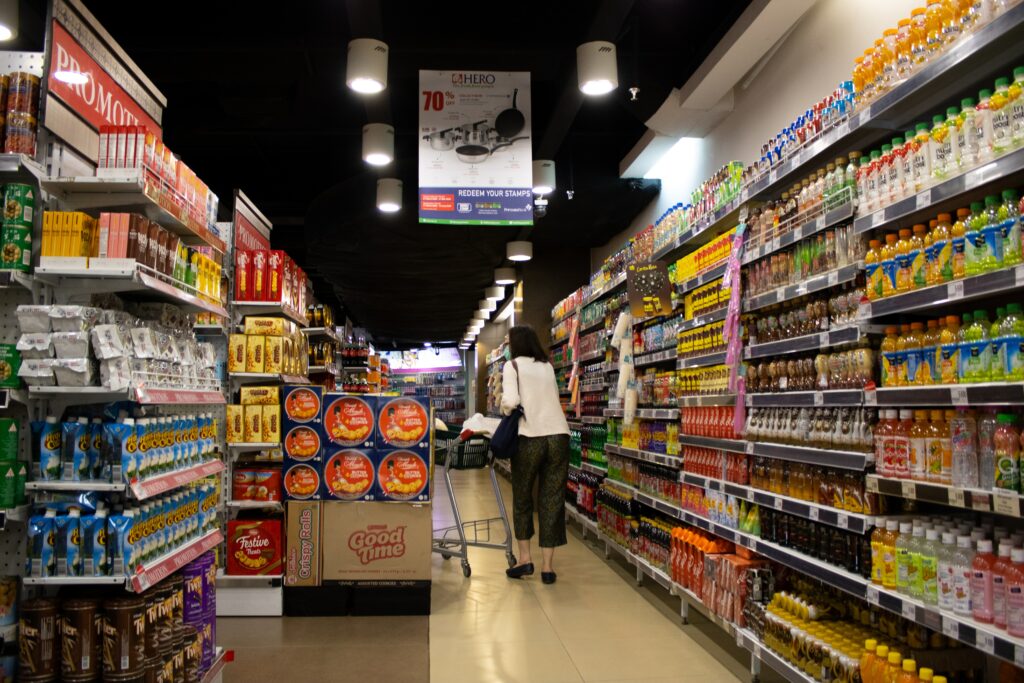In today’s Retail Media Landscape, digital marketing might seem the way to go. However, offline campaigns are the most effective way to reach and engage with customers in the ready-to-buy mode. Whether it’s through methods like print advertising, digital signage in-store, or experiential marketing events, offline campaign analytics are crucial for better targeting and engagement offline and can help retailers build brand awareness and drive sales.
The key to success with offline campaigns is understanding how to optimize them for maximum impact. This is where analytics comes in. By gathering and analyzing data on your offline campaigns, you can better understand how they’re performing and make informed decisions on how to improve them.
This article will explore the role of in-store analytics in offline campaigns and how it can help retailers get better targeting and engagement with their audience offline.
Gathering data for offline campaign analysis
Traditionally, retailers could collect data on offline campaigns through surveys and focus groups. While these methods can still be useful, they have their limitations. They can be time-consuming and costly. Furthermore, the data they provide may not always be representative of the broader audience.
Fortunately, technology has made it easier to track the performance of offline campaigns. For example, retailers can use QR codes or unique URLs to track the effectiveness of print advertisements. Additionally, track foot traffic at experiential marketing events using beacons or other location-tracking technology.

The benefits of using in-store tracking technology to measure offline campaigns include:
- More accurate data: By tracking specific actions taken by individuals, you can get a more accurate picture of how your offline campaign is performing.
- Real-time data: With traditional data collection methods, it can take weeks or even months to gather and analyze the data. With technology, you can get real-time data on your campaign’s performance.
- Cost-effective: Using in-store technology can be more cost-effective than traditional data collection methods. Long-term it requires fewer resources and can be automated.
- Ultimately, retailers can use data to get better targeting and engagement offline.
Analyzing offline campaign data for better targeting and engagement
Once you’ve gathered data on your offline campaigns, the next step is to analyze it to understand how your campaigns are performing and identify areas for improvement.
There are several key metrics you should track when analyzing your offline campaign data, including:
- Reach. How many people were exposed to your campaign?
- Engagement. How many people took a specific action in response to your campaign (e.g. visited your website, redeemed a coupon)?
- Conversion rate. How many people who engaged with your campaign ultimately made a purchase?
- Return on investment (ROI). How much revenue did your campaign generate compared to the cost of the campaign?
To make sense of this data, it’s helpful to use data visualization tools like charts and graphs. These can help you see patterns and trends in the data and make it easier to understand the results of your campaigns.
In addition to tracking these key metrics, it’s also important to consider the overall context in which your campaigns are being run. Also, identify how offline attribution can help get better targeting and engagement. This includes factors such as the competitive landscape, economic conditions, and any relevant industry trends.
In summary, by taking a holistic approach to analyzing your campaign data, you can get a more complete picture of how your campaigns are performing and identify opportunities for improvement.
The role of Retail Analytics platforms
By using a Retail Analytics platform, retailers can measure the performance of their offline campaigns. With Shoppermotion, retailers can track in-store traffic, measure the effectiveness of marketing campaigns, and optimize their store layouts and merchandising to improve sales.
Here are a few ways Shoppermotion can help retailers measure the performance of their offline campaigns:
- Track in-store traffic: Shoppermotion uses anonymous tracking technology to measure foot traffic in physical stores. This can help retailers understand how their campaigns are driving traffic. Ultimately, identify peak traffic times for targeted promotions.
- Measure campaign effectiveness. Shoppermotion can track the effectiveness of specific offline campaigns by measuring the conversion rate of customers exposed to the campaign. This can help retailers understand which campaigns are driving the most sales. Moreover, optimize their marketing efforts for better targeting and engagement.
- Optimize store layouts: Shoppermotion can track how customers move through stores. Identify areas where customers are most likely to make a purchase. Furthermore, this can help retailers optimize store layouts and merchandising to increase sales.
Overall, Shoppermotion’s technology provides retailers with valuable insights into the performance of their offline campaigns. It helps them optimize their in-store strategies for maximum impact.
Strategies for better targeting and engagement
Once you’ve analyzed your offline campaign data, you can use the insights you’ve gained to improve targeting and engagement strategies.
One way to do this is by segmenting your in-store audience based on the data you’ve collected. For example, if you’ve run an experiential marketing event and tracked the foot traffic using beacons, you can analyze the data to see which demographics were most likely to attend. You can then use this information to tailor future campaigns to these demographics.

Another way to improve targeting and engagement is by personalizing campaigns based on the data you’ve collected. For example, if you’ve run a print advertising campaign and used QR codes to track the effectiveness, you can analyze the data to see which ads had the highest conversion rates. You can then use this information to create more personalized ads for individuals who are most likely to convert.
In addition to targeting and personalization, there are a few other strategies you can use to improve the engagement of your offline campaigns:
Offer incentives to obtain better targeting and engagement
People are more likely to engage with your campaign if there’s something in it for them. Consider offering incentives such as discounts, freebies, or sweepstakes to encourage people to take action.
Use storytelling for better targeting and engagement
People are more likely to remember and be engaged by a campaign that tells a compelling story. Consider incorporating storytelling elements into your campaigns to make them more memorable and impactful.
Make it interactive and get better targeting and engagement
Interactive campaigns are more likely to engage people and get them to take action. Consider incorporating digital signage or other interactive elements such as quizzes, polls, or games into your campaigns to increase engagement.

Conclusion
In conclusion, in-store analytics can play a critical role in improving the performance of offline campaigns. By gathering and analyzing data on your campaigns, you can better understand how they’re performing and make informed decisions on how to implement better targeting and engagement strategies.
However, it’s important to remember that offline campaign optimization is an ongoing process. To get the most out of your campaigns, it’s crucial to continuously gather and analyze data to identify areas for improvement and make adjustments as needed.
By following these best practices, you can ensure that your offline campaigns are as effective as possible in reaching and engaging with your audience.






